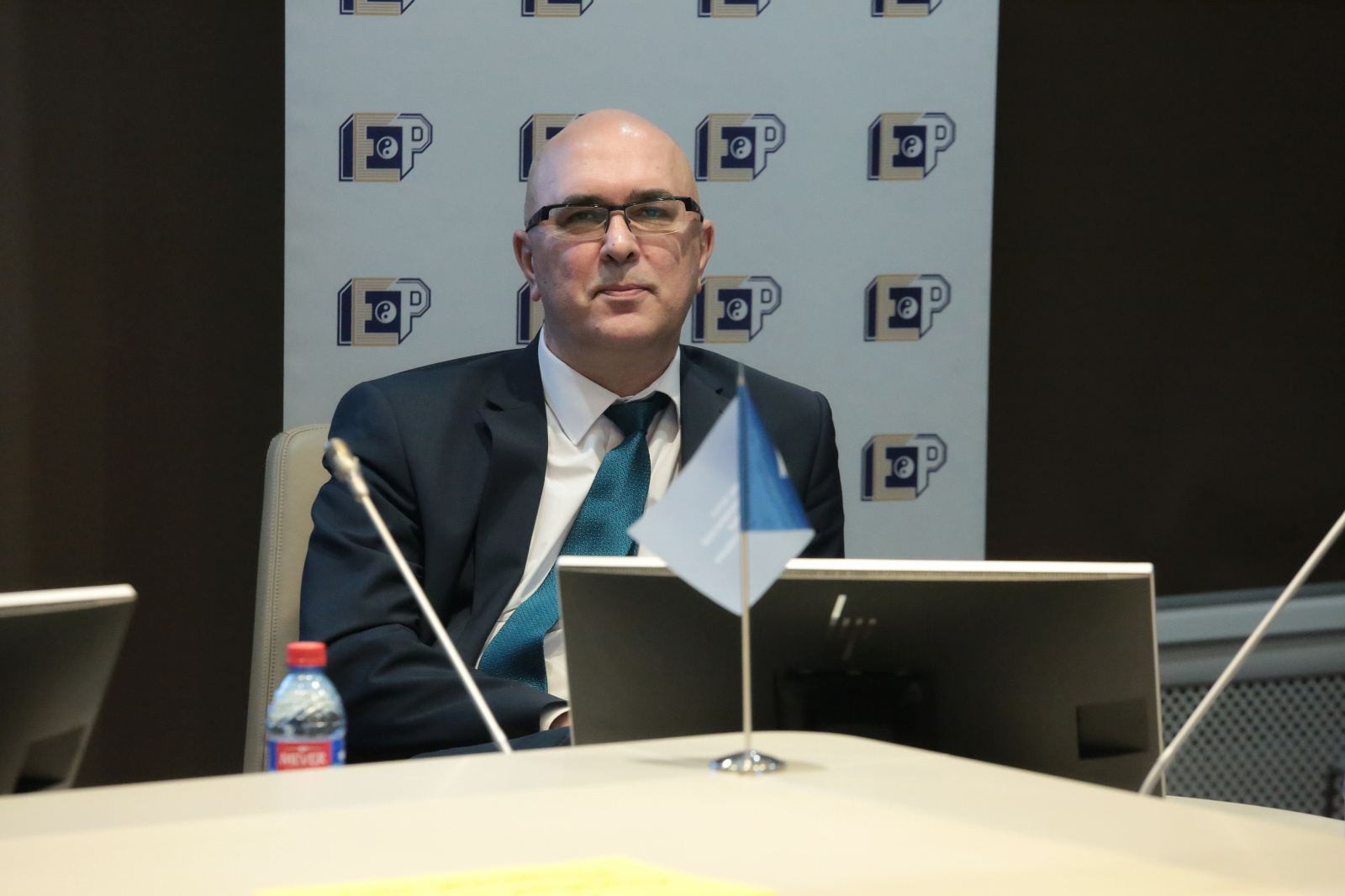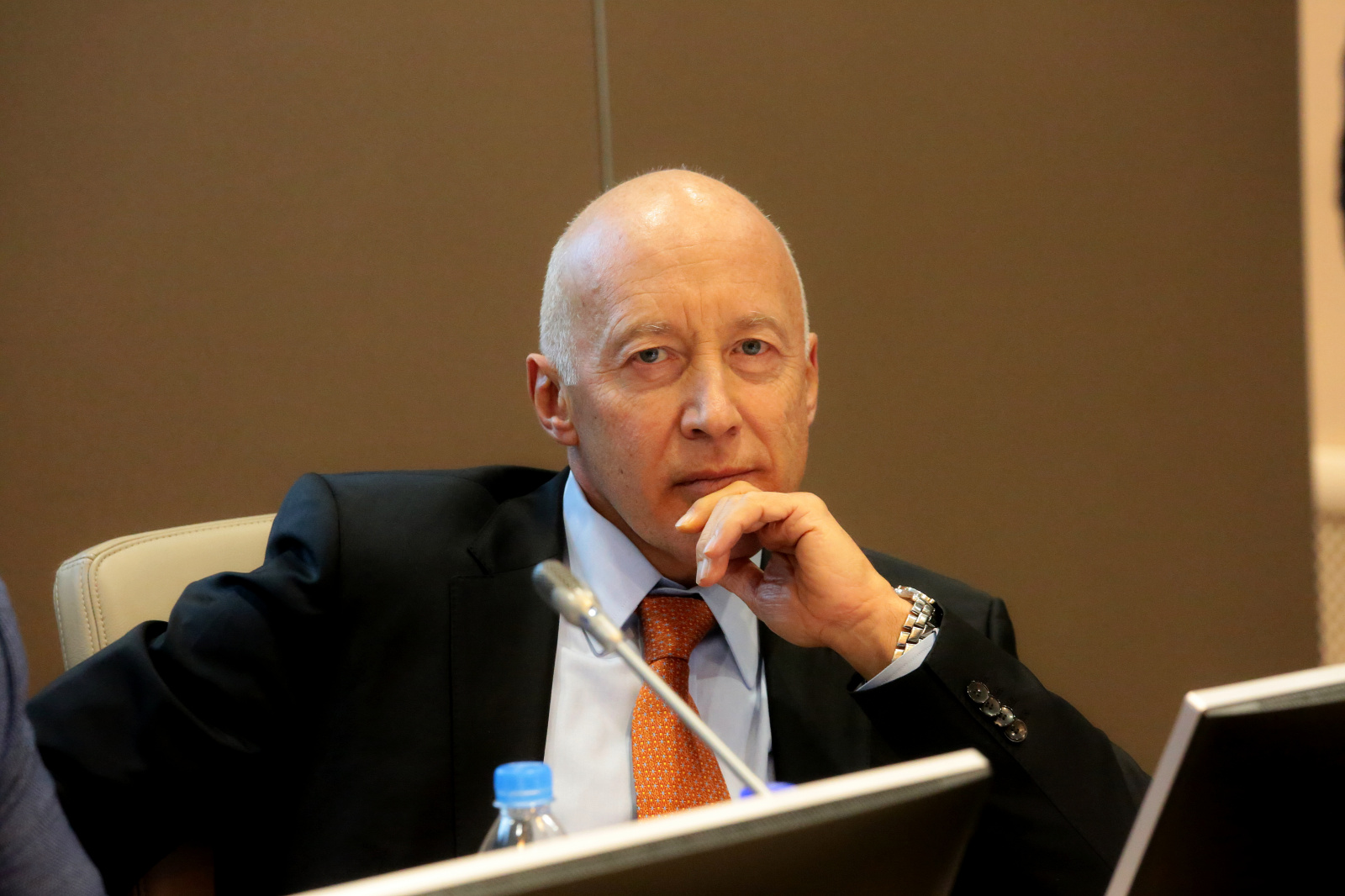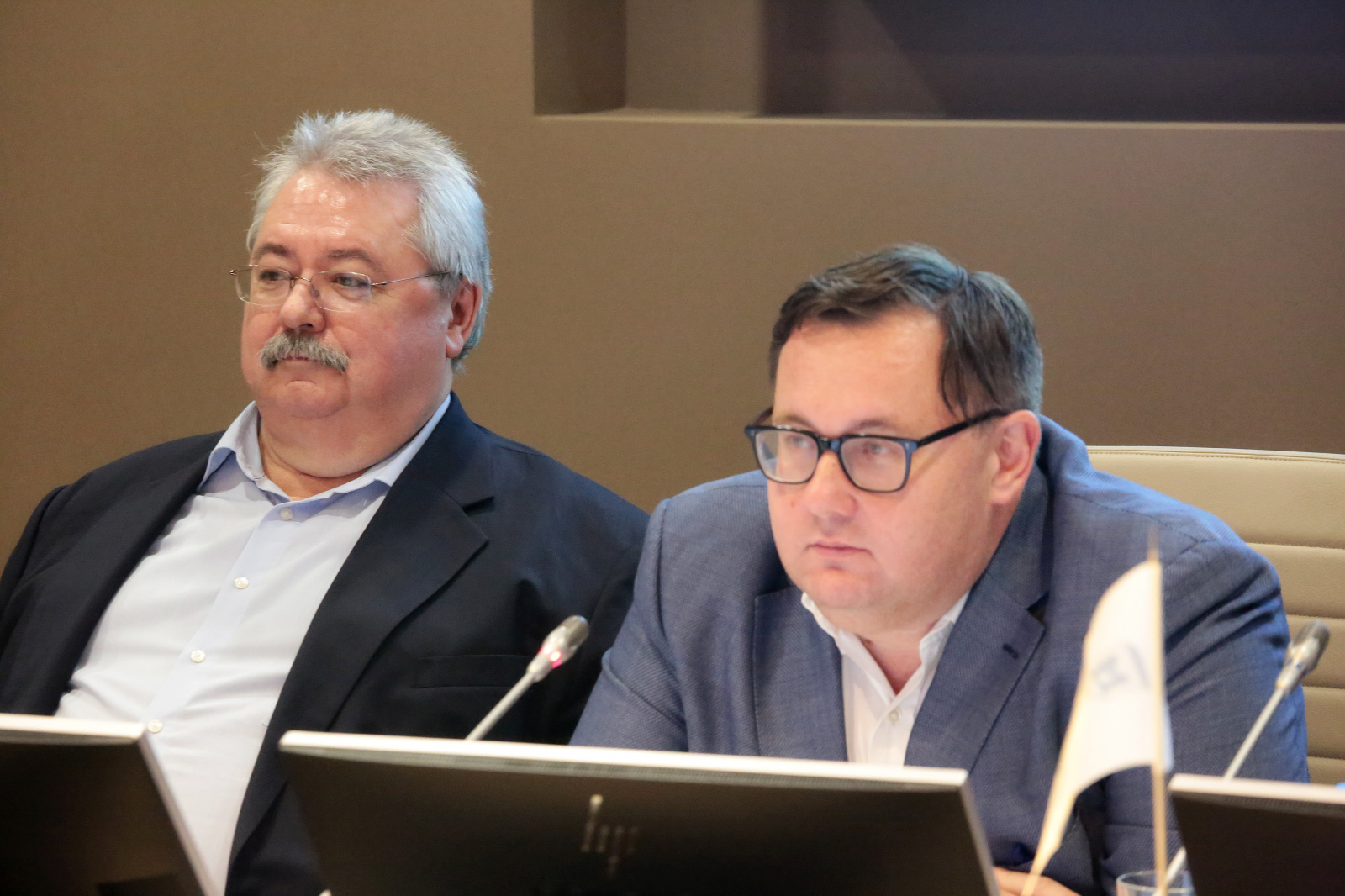17.12.2019 – MEETING OF THE SCIENTIFIC COUNCIL GAIDAR INSTITUTE
Final meeting of the Scientific Council took place on December 17 at Gaidar Institute. Andrey Polbin, Candidate of economic sciences, Head of Macroeconomic Modeling Department, delivered principal presentation “Optimum tax on greenhouse gases emission in model with overlapping generation”.
Sergey Drobyshevsky, IEP Scientific Director, said in his opening speech that climate policy is one of the current fashionable topics discussed by world community and International Department of Fiscal Sustainability set up together with RANEPA headed by Laurence Kotlikoff pays it due attention.
In his presentation, Andrey Polbin considered the retrospective impact of anthropogenic factors on concentration of greenhouse gases in the atmosphere and provided insight into global climate changes over certain periods. Scenarios of global warmth for a period until 2100 were also the topic of consideration.
The research focused on a new integrated climate model and economy with overlapping generations for estimation of optimum scenarios suggesting reduction of greenhouse gases emission as well as of optimum tax on emission. The model describes processes of oil, gas and coal extraction accompanied by increasing costs due to depletion of natural resources along with production of standard goods and services, and at the same time, alternative green energy is modeled.



It is assumed that greenhouse gas emission lead to global warming, which, in turn, has a negative impact on human activities bringing harm to economy. Current production activities of living generations leading to an increase of greenhouse gases in the atmosphere cause losses for future generations in the framework of the set task, i.e. there are negative externalities that need adjustment.
Andrey Polbin pointed out that construction of climate and economy integrated models is not a new approach in the economic analysis. In 2018, William Nordhaus earned Nobel prize in economics for development of this mechanism. However, analysis in existing models is based mainly on the context of facilitated goal setting with representative economic agent making impossible to analyze distribution of profits and losses between generations depending on a certain policy aimed at prevention of global warming.
The model presented at the meeting of the Scientific Council of the Gaidar Institute, explicitly described different living and future generations, which allows estimation of profits and losses resulted fr om alternative policies for each specific generations. Research demonstrated that it is realistic to reach Pareto-improvement by elaborating proper economic policy for every generation.
The presenter was confident that it is required to introduce a tax on greenhouse gases emission in order to reduce losses resulted from global warming. At the same time, according to Andrey Polbin, living generations will incur losses due to introduction of this tax and reduction of hydrocarbons consumption.
However, these losses can be compensated at the expense of designated transfers to be made by future generations in favor of the living ones. It is possible to achieve this transfer of well-being at the debt expense as state issue debt securities and pay transfers to generations who suffer from economic- climate policy, while winning generations will have to redeem debentures.
 According to IEP expert calculations, optimum tax maximizing equal growth of well-being of all generations in terms of percent increase of consumption amounts to $30 per ton of CO2 in case of a small loss (8% GDP in long term prospect without taxation of emission) and $70 per ton of CO2 in case of a large loss (30% GDP in long term prospect without taxation of emission). Growth rate of taxation should amount to 1.5% per year in real figures.
According to IEP expert calculations, optimum tax maximizing equal growth of well-being of all generations in terms of percent increase of consumption amounts to $30 per ton of CO2 in case of a small loss (8% GDP in long term prospect without taxation of emission) and $70 per ton of CO2 in case of a large loss (30% GDP in long term prospect without taxation of emission). Growth rate of taxation should amount to 1.5% per year in real figures.
Tatiana Lanshina, Candidate of economic sciences, Senior Researcher, IPEI RANEPA Centre of energy and ecology economic modelling, presented a supplementary report at the meeting of the Scientific Council “Assessment of competitiveness of renewable electric energy in Russia and in the world”. She noted significant underperformance of Russia at the market of renewable energy sources (RES) due to poor competitiveness, closed market for external stakeholders, requirements of technology localization and high capital expenditures for market participants.
Since the objective of research was to develop proposals for pursuing a policy in the field of renewable energy (for the period from 2025 to 2035) taking into account the best international experience and specifics of the Russian energy industry, the following recommendations were presented: switch to competitive selection of renewable energy projects based on a single-rate price (instead of tendering for capital costs), switch from fines for failure to comply with localization requirements to bonuses for their implementation.
 Also, according to the expert, a waiver of export requirements from Russian equipment manufacturers is required, as well as a refusal to increase localization requirements; creation of a database of territories wh ere it is possible to build power plants on renewable energy sources; setting more ambitious goals for development of renewable energy sources until 2035 (now - 11 GW equivalent to 5% of installed capacity and 2% of generation).
Also, according to the expert, a waiver of export requirements from Russian equipment manufacturers is required, as well as a refusal to increase localization requirements; creation of a database of territories wh ere it is possible to build power plants on renewable energy sources; setting more ambitious goals for development of renewable energy sources until 2035 (now - 11 GW equivalent to 5% of installed capacity and 2% of generation).
Presentations:
Andrey Polbin “Optimum tax on greenhouse gases emission in model with overlapping generation”.
Tatiana Lanshina “Assessment of competitiveness of renewable electric energy in Russia and in the world”
In his presentation, Andrey Polbin considered the retrospective impact of anthropogenic factors on concentration of greenhouse gases in the atmosphere and provided insight into global climate changes over certain periods. Scenarios of global warmth for a period until 2100 were also the topic of consideration.
The research focused on a new integrated climate model and economy with overlapping generations for estimation of optimum scenarios suggesting reduction of greenhouse gases emission as well as of optimum tax on emission. The model describes processes of oil, gas and coal extraction accompanied by increasing costs due to depletion of natural resources along with production of standard goods and services, and at the same time, alternative green energy is modeled.
It is assumed that greenhouse gas emission lead to global warming, which, in turn, has a negative impact on human activities bringing harm to economy. Current production activities of living generations leading to an increase of greenhouse gases in the atmosphere cause losses for future generations in the framework of the set task, i.e. there are negative externalities that need adjustment.
Andrey Polbin pointed out that construction of climate and economy integrated models is not a new approach in the economic analysis. In 2018, William Nordhaus earned Nobel prize in economics for development of this mechanism. However, analysis in existing models is based mainly on the context of facilitated goal setting with representative economic agent making impossible to analyze distribution of profits and losses between generations depending on a certain policy aimed at prevention of global warming.
The model presented at the meeting of the Scientific Council of the Gaidar Institute, explicitly described different living and future generations, which allows estimation of profits and losses resulted fr om alternative policies for each specific generations. Research demonstrated that it is realistic to reach Pareto-improvement by elaborating proper economic policy for every generation.
The presenter was confident that it is required to introduce a tax on greenhouse gases emission in order to reduce losses resulted from global warming. At the same time, according to Andrey Polbin, living generations will incur losses due to introduction of this tax and reduction of hydrocarbons consumption.
However, these losses can be compensated at the expense of designated transfers to be made by future generations in favor of the living ones. It is possible to achieve this transfer of well-being at the debt expense as state issue debt securities and pay transfers to generations who suffer from economic- climate policy, while winning generations will have to redeem debentures.
Tatiana Lanshina, Candidate of economic sciences, Senior Researcher, IPEI RANEPA Centre of energy and ecology economic modelling, presented a supplementary report at the meeting of the Scientific Council “Assessment of competitiveness of renewable electric energy in Russia and in the world”. She noted significant underperformance of Russia at the market of renewable energy sources (RES) due to poor competitiveness, closed market for external stakeholders, requirements of technology localization and high capital expenditures for market participants.
Since the objective of research was to develop proposals for pursuing a policy in the field of renewable energy (for the period from 2025 to 2035) taking into account the best international experience and specifics of the Russian energy industry, the following recommendations were presented: switch to competitive selection of renewable energy projects based on a single-rate price (instead of tendering for capital costs), switch from fines for failure to comply with localization requirements to bonuses for their implementation.
Presentations:
Andrey Polbin “Optimum tax on greenhouse gases emission in model with overlapping generation”.
Tatiana Lanshina “Assessment of competitiveness of renewable electric energy in Russia and in the world”
Wednesday, 18.12.2019